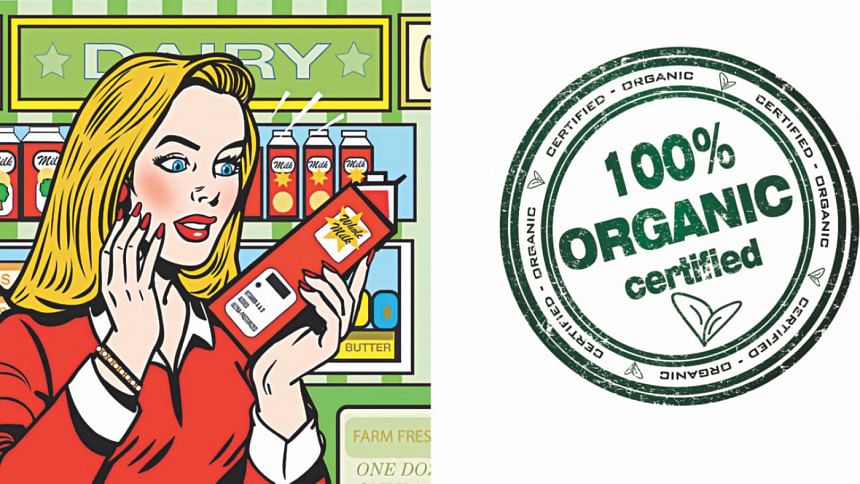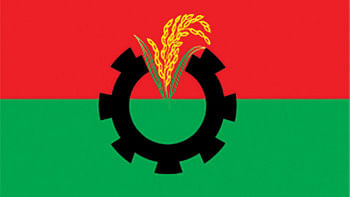Fancy food labels and what they mean

A trip to the supermarket is a regular part of our lives now. With all the health trends that are becoming popular, along with the products associated with them, navigating the aisles can be tricky with so many labels to decipher. Below I present you with a handy guide to the various labels and why they might interest you.
Disclaimer: Consult a nutritionist or physician before committing to any health fads
ORGANIC
The most commonly heard label, this certification is given to produce and finished goods that are grown without the use of pesticides, synthetic fertilizers, sewage sludge, genetically modified organisms, or ionizing radiation. Simply stated and in local language, we would call it formalin-free.
Food: Any produce ranging from rice to tea.
Why choose: Although a tad bit pricey, organic food is much safer and more nutritious than conventional food which is pumped with harmful hormones and pesticides. Plus you're more likely to get a fresher taste. There is also the environment friendly factor — organic farming keeps water clean, prevents soil erosion and helps protect animals.

GLUTEN-FREE
This is a term that has been gaining popularity over the years. As you may have noticed, gluten-free foods are those made with grains. The gluten-free shelf probably houses an array of pasta, flour and cereal. Meant for people with celiac disease, this label assures that gluten will not trigger the production of antibodies that damage the lining of the small intestine. But what exactly is gluten? It is the general name given to proteins found in the endosperm of wheat and other cereal grains. Although gluten is vital in helping foods maintain their shape, it is also a gut irritant.
Food: Flour, cereal, pasta, biscuit, bread and other baked goods.
Why choose: No other medical condition has given rise to a dieting fad as the case of gluten-free. Obviously it makes perfect sense to look for this label in case of gluten intolerance or celiac disease as there is no real benefit to going gluten-free. Sometimes accredited to losing weight, it can also be the opposite as gluten-free isn't necessarily healthier and can contain high calories.
VEGAN
A rather controversial term, veganism is immensely popular among celebrities, models, YouTubers and of course animal activists. A totally plant based diet, it is a stricter form of vegetarianism that eliminates not just meat but animal produce as well. Thus a vegan label indicates that the product is meat free, dairy free and egg free, as well as free of other animal derived ingredients. Nut milks are usually used as a substitute for dairy and flax seeds for egg. You might find it a little hard to believe how some products are made without these vital elements, but there are tons of replacements that exist among nature.
Food: Any plant-derived ingredient, soy/nut milks, chips, yogurt, tofu, desserts etc.
Why choose: Many choose to go vegan because they find animal farming inhumane but a plant based lifestyle is more popular than ever because of the myriad of health benefits. It is also the trendy thing to do. It's scary to give up meat and cheese, but fitness, clear skin and decreased stomach issues have been attributed to going vegan.
LOW GI
The Glycemic Index (GI) is a relative ranking of carbohydrate in foods according to how they affect blood glucose levels. Another label for carbs, low GI foods result in a steady rise of blood glucose level which in turn causes a small rise in insulin, keeping you full and energised for longer. Fatigue and sugar cravings are minimised.
Food: Bread, pasta, minimally processed grains.
Why choose: Low GI foods can reduce the risk of type 2 diabetes and heart diseases. Following this kind of diet may help to lose weight as it keeps you feeling fuller for longer. However, low GI does not necessarily translate to low fat.
NATURAL
Foods marked as natural are supposed to be minimally processed and meant to be free of preservatives and artificial ingredients. However, they may contain antibiotics, growth hormones, and other similar chemicals. I use the words “supposed to” and “meant to” because the parameter of what is considered as natural is quite vague. This particular label is widely used in food labeling and marketing implying a variety of things, thus the term “natural” is often misleading. Products claiming to be “all natural” or “100% natural” are not definetly any different from just natural.
Food: Anything ranging from granola bars to juices.
FREE RANGE/CAGE FREE
Used on animal products, this label indicates that animals are not confined in cages under harsh conditions and are allowed to roam freely. This label is very minimally regulated and producers can still get away with keeping animals closely confined, but just without cages, and use the label “cage free”.
Food: Milk, eggs.
Why choose: Because you care about animal welfare
GRASS-FED
Often used to refer to “free range/ cage free” as well, they may not always be the same. Generally, grass-fed refers to animals that are raised on pastures/ranges rather than feedlots and allowed to graze on open land. Grass-fed animals are of more nutritional value than commercial grain-fed animals raised in confinement.
Food: Ghee, butter, meat/ poultry.
Why choose: Grass-fed animals may contain significantly less antibiotics and hormone
NON-GMO
Non-GMO stands for Non Genetically Modified Organism. GMO involves the use of DNA technology to alter the genetic structure in plants and animals.
Food: Soy, corn, canola.
Why choose: If you eat soy products, do look for this label as GMO soy has been linked to liver changes, allergic reactions, infant mortality and herbicidal danger.

 For all latest news, follow The Daily Star's Google News channel.
For all latest news, follow The Daily Star's Google News channel. 



Comments